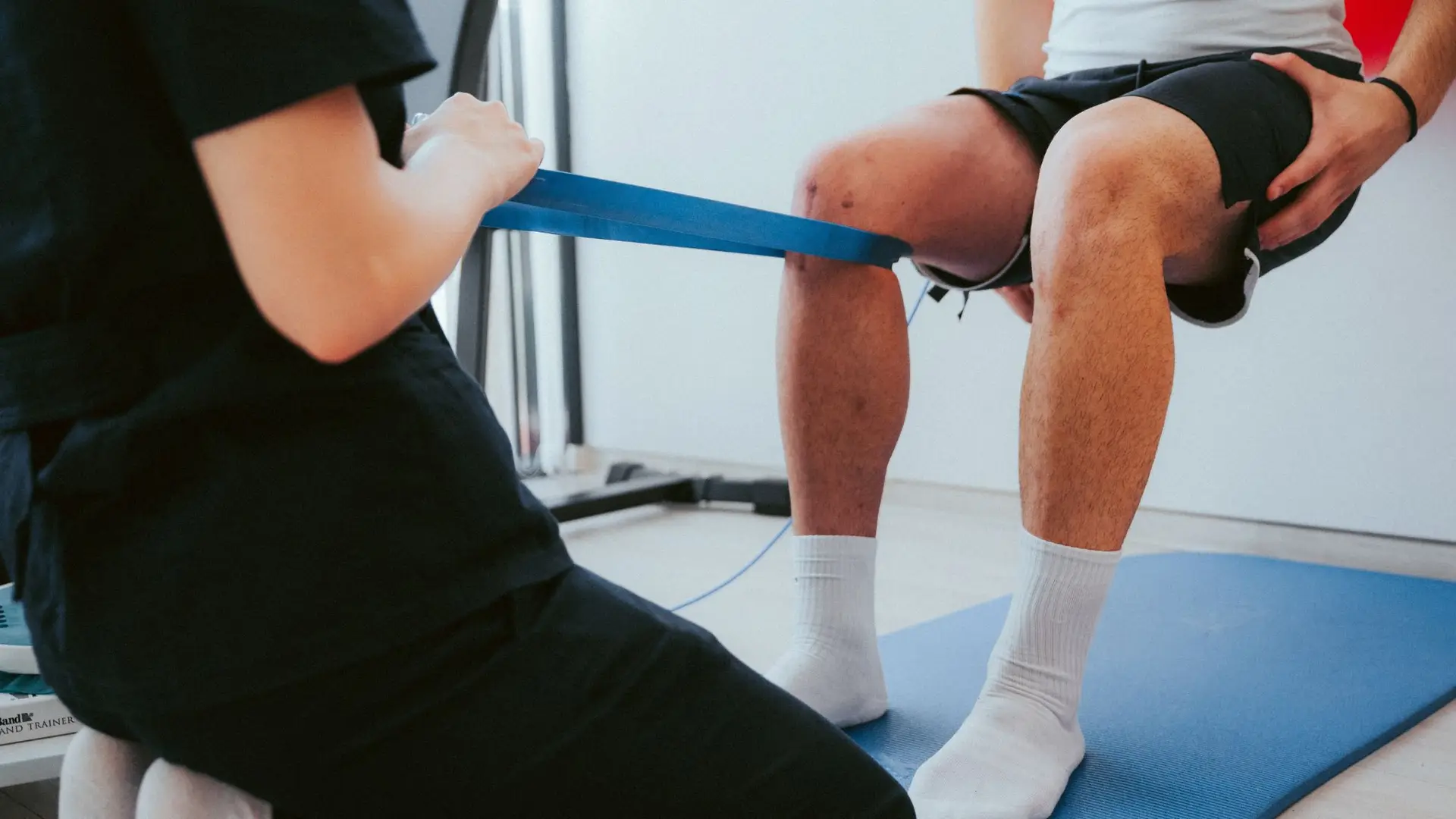
Physiotherapy and Chronic Pain
Physiotherapy can be incredibly beneficial in managing chronic pain. Chronic pain, lasting for weeks, months, or even longer, often stems from various conditions like arthritis, fibromyalgia, injuries, or nerve damage. Physiotherapy aims to address these issues through tailored exercises, manual therapies, and education to improve mobility, strength, and function while reducing pain.
Here’s how physiotherapy can help manage chronic pain:
Exercise Programs
Exercise programs designed by physiotherapists play a pivotal role in managing chronic pain, offering tailored routines aimed at alleviating discomfort, improving mobility, and enhancing overall quality of life. These programs are meticulously crafted to suit individual needs, considering the type and severity of the pain, as well as the patient’s physical abilities and limitations.
The exercises prescribed in these programs encompass a variety of techniques, focusing on strengthening muscles, enhancing flexibility, and improving endurance. For chronic pain stemming from conditions like arthritis or musculoskeletal issues, low-impact exercises such as gentle stretching, yoga, or aquatic therapy might be recommended. These activities aim to increase joint flexibility, reduce stiffness, and mitigate pain associated with movement.
Resistance training exercises using body weight, resistance bands, or light weights can also be part of these programs. These exercises help in strengthening muscles around the affected area, providing support to joints, and improving overall stability. For instance, individuals with chronic lower back pain might benefit from exercises targeting core muscles, which can significantly reduce discomfort and improve functionality.
Moreover, aerobic exercises like walking, cycling, or swimming are commonly included to enhance cardiovascular health and stimulate the release of endorphins, the body’s natural painkillers. These exercises not only assist in managing pain but also contribute to mood improvement, combating the psychological toll often associated with chronic pain.
However, the success of exercise programs in managing chronic pain lies in their personalized nature. Physiotherapists carefully monitor progress and adjust the routines as needed, ensuring that exercises are challenging yet safe. Empowering individuals with the knowledge and tools to continue these exercises at home is also a fundamental aspect, promoting long-term pain management and improved overall well-being.
Manual Therapy
Manual therapy stands as a cornerstone in the holistic approach of physiotherapy for managing chronic pain. This hands-on approach involves skilled manipulation and mobilization of joints and soft tissues to alleviate discomfort, enhance mobility, and restore function.
In the realm of chronic pain management, manual therapy encompasses various techniques tailored to the individual’s condition. Massage therapy, for instance, involves applying pressure and manipulation to soft tissues, releasing tension, improving blood flow, and easing muscle tightness often associated with chronic pain conditions like fibromyalgia or myofascial pain syndrome. The gentle kneading and manipulation of muscles not only soothe immediate discomfort but also promote relaxation, reducing stress that can exacerbate chronic pain.
Joint mobilization and manipulation techniques target specific joints, aiming to restore their natural movement and reduce pain stemming from conditions like osteoarthritis or chronic joint stiffness. By applying controlled movements, physiotherapists can improve joint range of motion, alleviate stiffness, and decrease pain associated with joint dysfunction.
Moreover, techniques such as traction and stretching are employed to reduce pressure on nerves and soft tissues, particularly beneficial in managing chronic pain caused by nerve compression or herniated discs. These methods aim to create space in affected areas, relieving pain and discomfort by reducing nerve irritation.
The effectiveness of manual therapy in chronic pain management is enhanced by its ability to complement other physiotherapy interventions. Combined with exercise programs or modalities like heat or cold therapy, manual therapy serves as a comprehensive approach to address the multifaceted nature of chronic pain, offering immediate relief while contributing to long-term improvement in functionality and quality of life. As with any therapeutic intervention, personalized assessment and application by skilled physiotherapists ensure the safety and effectiveness of manual therapy techniques for individuals dealing with chronic pain.

Education and Self-Management
Education and self-management are integral components of physiotherapy in the comprehensive management of chronic pain. Beyond exercises and treatments, empowering individuals with knowledge about their condition, pain mechanisms, and self-care strategies plays a crucial role in improving their quality of life and reducing the impact of chronic pain.
Physiotherapists serve as educators, providing in-depth information about the underlying causes of pain, its impact on the body, and strategies to manage and cope with it effectively. Understanding the nature of chronic pain helps individuals develop realistic expectations and empowers them to actively participate in their treatment.
Self-management techniques taught by physiotherapists often include ergonomic advice, teaching proper body mechanics, and suggesting modifications in daily activities to prevent exacerbation of pain. Learning how to perform tasks in ways that minimize strain on affected areas can significantly reduce discomfort and prevent further injury.
Moreover, individuals are guided in adopting lifestyle modifications like maintaining a healthy weight, practicing relaxation techniques, and managing stress. These lifestyle adjustments complement other treatments and contribute to overall pain management.
Furthermore, patients are taught techniques for pain modulation, such as mindfulness, breathing exercises, or distraction techniques. These approaches help individuals better cope with pain and reduce its perceived intensity.
In essence, education and self-management empower individuals with chronic pain to take an active role in their healing process. By understanding their condition and implementing self-care strategies, individuals can better manage their symptoms, reduce the frequency of flare-ups, and improve their overall well-being. The collaboration between physiotherapists and patients in implementing these strategies fosters a sense of control and empowerment, significantly impacting the way chronic pain is experienced and managed on a daily basis.
Modalities
Modalities in physiotherapy refer to various therapeutic techniques and tools employed to manage chronic pain. These modalities encompass a wide range of interventions, each serving a distinct purpose in alleviating discomfort, reducing inflammation, and promoting healing.
One commonly utilized modality is heat therapy, which involves the application of heat to affected areas. This can be through hot packs, warm towels, or heating pads. Heat increases blood flow, relaxes muscles, and eases stiffness, offering relief for chronic pain conditions such as arthritis or muscle spasms.
On the contrary, cold therapy, known as cryotherapy, involves the application of cold packs or ice to reduce inflammation, numb the area, and alleviate pain. It’s particularly effective in managing acute pain, reducing swelling, and soothing pain associated with injuries or inflammation.
Electrotherapy modalities, like transcutaneous electrical nerve stimulation (TENS) or ultrasound, utilize electrical currents or sound waves to stimulate nerves, reduce pain signals, and promote healing. TENS units, for example, deliver mild electrical currents to disrupt pain signals to the brain, offering relief for various chronic pain conditions.
Additionally, therapeutic ultrasound uses sound waves to generate heat within deep tissues, increasing blood flow and accelerating the healing process for conditions like tendonitis or bursitis.
Furthermore, techniques such as traction or decompression therapy aim to relieve pressure on spinal discs or nerves, reducing pain associated with conditions like herniated discs or spinal stenosis.
Modalities serve as valuable adjuncts to other physiotherapy interventions like exercise programs or manual therapy. They provide additional avenues for pain relief and healing, often complementing each other to create a comprehensive treatment plan tailored to address the multifaceted aspects of chronic pain. Physiotherapists carefully select and combine these modalities based on individual needs and responses, ensuring a personalized approach to managing chronic pain and improving overall quality of life.

Posture Correction and Body Mechanics
Posture correction and understanding proper body mechanics are pivotal aspects of physiotherapy in managing chronic pain. How we hold ourselves and move throughout the day significantly impacts the strain on muscles, joints, and ligaments, directly influencing the experience of chronic pain.
Physiotherapists keenly assess an individual’s posture and movement patterns to identify areas of concern contributing to chronic pain. Poor posture, whether while sitting, standing, or moving, can lead to muscular imbalances and increased stress on joints, exacerbating conditions such as neck pain, lower back pain, or joint stiffness.
Through targeted interventions, physiotherapists educate patients about the significance of maintaining proper posture in various activities. Techniques may include ergonomic advice for workstations, teaching the correct alignment of the spine, and suggesting adjustments in sitting or standing positions to reduce strain on specific body parts.
Moreover, educating individuals about proper body mechanics during daily activities is crucial. This involves teaching techniques for lifting objects, getting in and out of bed, or performing tasks without causing further stress on the body. Simple adjustments in movement patterns can significantly reduce the risk of injury and alleviate chronic pain.
Incorporating exercises that specifically target posture improvement and core muscle strengthening is also common. Strengthening core muscles helps in stabilizing the spine and maintaining proper alignment, ultimately reducing chronic pain stemming from poor posture.
Ultimately, the goal of posture correction and understanding body mechanics is to instill long-term changes in how individuals move and carry themselves throughout their daily activities.
Psychological Support
In the realm of managing chronic pain, psychological support plays a pivotal role in holistic care. Chronic pain isn’t solely a physical experience—it deeply intertwines with mental and emotional well-being. Physiotherapy often includes a psychological component to address these interconnected aspects.
Chronic pain can lead to anxiety, depression, and feelings of frustration or hopelessness. Physiotherapists recognize the psychological toll of persistent pain and integrate strategies to support patients’ mental health.
One crucial aspect is education. Physiotherapists inform individuals about the mind-body connection, helping them understand how emotions and stress can influence pain perception. This knowledge empowers patients to recognize and manage the emotional impact of pain.
Cognitive-behavioral strategies are often employed to change negative thought patterns and behaviors associated with chronic pain. These techniques aim to reframe thoughts about pain, develop coping mechanisms, and improve resilience in facing daily challenges.
Moreover, relaxation techniques, mindfulness, and breathing exercises are taught to help individuals manage stress and anxiety, promoting a sense of calmness and reducing pain intensity.
Collaboration with psychologists or mental health professionals might be recommended in some cases. This collaboration allows for a more comprehensive approach to managing chronic pain, addressing both physical and emotional aspects simultaneously.
By addressing the psychological aspects of chronic pain, physiotherapy contributes significantly to improving overall well-being. Integrating psychological support with other physiotherapy interventions not only helps in pain management but also enhances patients’ ability to cope, fostering a more positive outlook and better quality of life amidst chronic pain challenges.